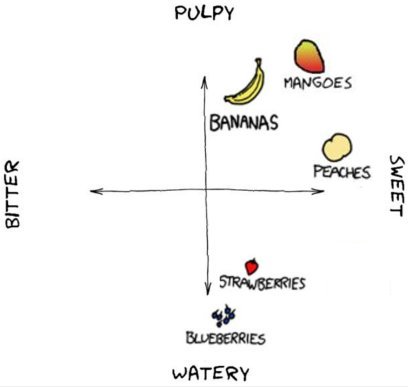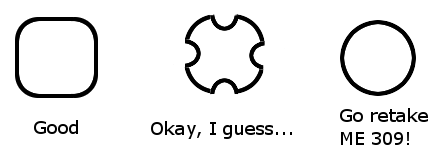So you’re all probably dying to know what happened to our smoothie menu additions at the Grille, eh? Right?
Well, too bad. I’m gonna tell you anyway. It’s more or less successful. I have always been griping about the high prices at Jamba Juice and I finally understand why: When all of your product is perishable and you serve something which is by definition “fresh” you must compensate with greater margin. Not to mention the unautomatable labor-intensive preparation process.
You see, it’s a careful line that must be tread with smoothies. There’s the constant battle between taste and consistency. Taste is provided by the fruit, fluid base (yogurt in our case, milk in others), and any syrups or sugar or juice that may be added. Consistency is a factor of fruit (pulpiness, water content), fluid/solid ratio and ice. There are

It may look like mangoes and bananas are the perfect smoothie fruit for sweetness and creamy texture, but until you try one (as I did during the first week of classes) you can’t appreciate how shredding their cell walls will bring out the tart viscosity hidden within each mango or banana. They taste good going down but stick to your insides. Literally, they are very course and gummy. So mangoes are not to be left to themselves. In addition, blending naturally introduces oxygen into a delicious colloidal interaction with the puree. Harmless, right? I drink oxygen all the time. This presents a problem for bananas. They’re chockful of polyphenol oxidase and your blender’s steel blade likely has plenty of catalytic cations readily being dispensed into solution. Not only will your smoothie be course, fibrous and in all probability somewhat tart, it will rapidly turn brown and smell strongly of banana esters. So let this be a cautionary tale on the dangers of bananas and mangoes in any state other than as naturally packaged. They shouldn’t be left alone and must be accompanied by other produce. Of course there’s a trade-off with added tartness and wateriness but hopefully someone will learn from my ill-fated experiment.
On top of all this, the blender itself has a large effect on the resulting suspension. Well-designed blenders have angles that deviate from the circular cross-section. Angles allow contents to be directed back towards the center into the “maelstrom” as opposed to centrifugally sliding along the walls.

Of course, our blender jars are approximated furthest to the left. They have conspicuously wide blades that extend almost the entire bottom of the jar. I’d say the commercial motors definitely have the horsepower to be able to stand up to whatever torque the contents will be able to throw at them though.
Keeping all that in mind, our best smoothie is the Strawberry Sunrise. It’s dead simple: peaches and strawberries, yogurt and double ice. We’ve taken to using some syrup to help with the sweetness in cases where the peaches aren’t doing the job.
Another thing I’ve noticed is the effect of pulpiness on freezability. Strawberries freeze solid into little ice cubes. Their smoothies, though slightly larger do the same. Mangoes do not. Bananas do not. (How else do you explain the success of chocolate frozen bananas? They’re still bite-able.) I have a feeling this ties directly to their pulpiness. Keep this in mind, y’all. Peace.
^About that little sign-off at the end there: apparently I’m one of those d-bags who signs off stuff now. Hmm…
You’re also one of those d-bags who says y’all and has never been farther south than Indy.
Also, shape of a container in this context isn’t really in the scope of ME 309. It can’t really be mathematically defined, but I would intuitively say that you’re probably right in your ranking system of containers
Because nothing says The South like prep school and parents paying for your college.